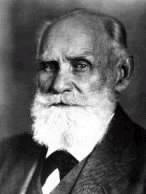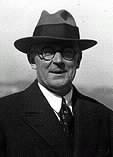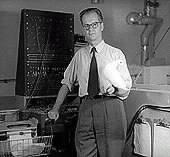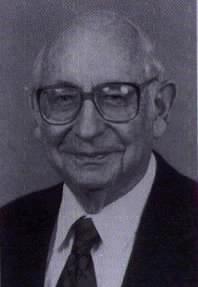BEHAVIOURAL PSYCHOLOGY PRIMER
INTRODUCTION
BEHAVIOUR THERAPY
One encyclopaedic definition of behaviour therapy is:
"An active psychotherapeutic approach aimed at modifying undesirable behaviours by reinforcing acceptable behaviour and suppressing (by non reinforcement) undesirable behaviour. After observing the behaviour and factors that trigger and maintain it, the therapist employs any of various techniques of reward and/or punishment (e.g., aversion therapy, desensitisation, guided goal directed imagery). A form of PSYCHOTHERAPY developed from the work of B.F. SKINNER and others, behaviour therapy is used in private and institutional therapy in group and individual settings to treat such disorders as DRUG ADDICTION, ALCOHOLISM, and PHOBIAS." (26, 25)
THE HISTORY OF BEHAVIOURAL THERAPY
ARISTOTLE
Aristotle (400BC), in his essay "Memory" showed strong focus on association which is understood to be a predecessor of behaviourism. He believed that associations are made because the objects being associated are similar, or opposite, or near to each other.
PAVLOV
 Russian born Ivan Petrovich Pavlov (1849-1936) was essentially a neural physiologist with a special interest in reflex regulation of activity / behaviour. Between 1891 and 1900 he conducted research into the physiology of digestion. This led to an interest in the science of conditioned reflexes and in particular the digestive glands e.g. salivary glands. He concluded that there was a psychological aspect to the operation of glands through experimentation with dogs. He first published his finding is 1903. (23,24,25)(13p9) Russian born Ivan Petrovich Pavlov (1849-1936) was essentially a neural physiologist with a special interest in reflex regulation of activity / behaviour. Between 1891 and 1900 he conducted research into the physiology of digestion. This led to an interest in the science of conditioned reflexes and in particular the digestive glands e.g. salivary glands. He concluded that there was a psychological aspect to the operation of glands through experimentation with dogs. He first published his finding is 1903. (23,24,25)(13p9)
He proposed that 3 basic principles were involved in what has been labelled as classical conditioning (as opposed to operant conditioning which is a form of associative learning in which there is a contingency between the response and the presentation of the reinforcer <25>).
- determinism
- analysis / synthesis
- structure (23,24,25)
Pavlov proposed that reflexes originate in the cerebral cortex and postulated that any external stimuli - when coinciding with a normal reflex - could become the conditioned signal for the creation of a new reflex. (23,24,25)
Pavlov is perhaps best known for his experiments with dogs. During these experiments Pavlov rang a bell each time he fed his experimental dogs. After some time he observed that the dogs would salivate when the bell rang without the presence of food itself. Pavlov referred to this as a temporary conditioned reflex as opposed to an innate (natural) reflex. For his contribution to medical science Pavlov was awarded the Novel Prize in 1904. (23,24,25)
WATSON
 Pavlov's thinking greatly influenced US (South Carolina) born psychologist John Broadus Watson (1878-1958) around 1913. (24) Watson is widely believed to have been responsible for launching the Behavioural School of Psychology. He took Pavlov's reflex research and applied it more generally to behaviour. Watson studied animals (rats in mazes), child-rearing and children (ref baby Albert B - 1920 with Rayner <17p6>) with a view to determining if behaviour was "hard-wired" neurologically or simply the cumulative effect of repeated conditioning experiences (or both - nature V nurture argument). Watson disagreed with fellow psychologists such as Freud and believed that although many behaviours are based upon innate reflexes many more are entirely the result of conditioned or at least strongly influenced by conditioning. He did not view that behaviour could be inherited genetically. (Following a very public revelation of marital affairs he later moved into the advertising industry). (22,27)(4p51) Pavlov's thinking greatly influenced US (South Carolina) born psychologist John Broadus Watson (1878-1958) around 1913. (24) Watson is widely believed to have been responsible for launching the Behavioural School of Psychology. He took Pavlov's reflex research and applied it more generally to behaviour. Watson studied animals (rats in mazes), child-rearing and children (ref baby Albert B - 1920 with Rayner <17p6>) with a view to determining if behaviour was "hard-wired" neurologically or simply the cumulative effect of repeated conditioning experiences (or both - nature V nurture argument). Watson disagreed with fellow psychologists such as Freud and believed that although many behaviours are based upon innate reflexes many more are entirely the result of conditioned or at least strongly influenced by conditioning. He did not view that behaviour could be inherited genetically. (Following a very public revelation of marital affairs he later moved into the advertising industry). (22,27)(4p51)
One of his best known experiments involved a human infant code-named Albert B. Albert was exposed to a white rat and showed no sign of fear. Thereafter every time Albert was exposed to the rat a loud banging noise was made sufficient to make him cry. A few months later when Albert was again exposed to a rat fear resulting in observable crying had become the conditioned response to the stimuli if being in the presence of a rat. Moreover the conditioning over time generalised to any furry object. The purpose of the experiment was to demonstrate the role of conditioned association in the generation of behavioural patterns. (It is not clear if Albert was ever deconditioned!) (22,27)
Albert did not suffer in vain - Watson's attack on the contention held by the eugenics movement that behaviour was inherited may have helped to reduce the credibility of eugenic thinking. In the 50's and 60's Watson applied his thinking as a therapeutic approach to behavioural problems. (22,27)
EDWARD THORNDIKE
US(MA) born Edward Lee Thorndike (1874-1949) was a contemporary of Watson's. He specialised in the study of animal intelligence and formulated the theory of "law of effect", which states that a behaviour is learned by trial and error, and that a behaviour will be conditioned more easily if the consequences of the stimuli are satisfying. This work was later applied to the reasons for drug / substance dependence. (22)(13p7)
SKINNER
 US born Burrus Frederic Skinner (1904-1990) described this strengthening of behaviours proposed by Thorndike as operant learning / conditioning. He proposed that organisms act in a fashion that is likely to result in satisfaction. (22) US born Burrus Frederic Skinner (1904-1990) described this strengthening of behaviours proposed by Thorndike as operant learning / conditioning. He proposed that organisms act in a fashion that is likely to result in satisfaction. (22)
He suggested that all behaviour has a consequence (22)
- shaping (behaviour is reinforced)
- negative (withdrawal of a stimulus reduces the probability behaviour)
- punishment (any stimulus whose presence reduces the probability behaviour)
Skinner developed a box into which a subject animals such as rats and birds would be placed. The animal would be able to press one or more levers in order to trigger one or more stimuli (lights, electric shocks) in order to receive food or water. On pressing one lever the animal would receive food or water, on pressing another an electric shock. (22)
Skinner worked mainly with pigeons and to some extent with his own infant daughter. If the goal of an experimental pigeon was to turn left, any small turn in that direction would be rewarded with food. Skinner likened this to the way in which infants learn to speak by being rewarded for marking noises that approximate to speech. Skinner was a strict behaviourist and did not believe in the "mind" as such. He proposed that all behaviours is the result of conditioning from reward or punishment. His theories were labelled as being too simplistic and experimentally flawed when applied to adult-humans in that they did not take account of an organism behaving as a "common-sense" neurological entity rather than as an organism driven purely by like (satisfaction) and dislike (fear). (22)
VALENTINE
Valentine (circa 1928) took animal experimentation to a new high and set the standard for maze technology and analysis. <Rat and dog experimentation> (20)
EYSENCK (1960)
Eysenck popularised behavioural therapy in the 60's (he was later responsible for publications such as "Know Your Own IQ" and "Are You Psychic" with Carl Sargent). Eysenck also popularised formal statistical analysis of phychological data. (17p3)
WOLPE
 Joseph Wolpe (1915-1997) was born in South Africa and is best known for his work on desensitisation. He developed a methodology for treating those with extreme anxiety about specific events, situations, things or people. This methodology involved the generation of a hierarchy of anxiety invoking situations on a sliding gradient (SUS - Subjective Anxiety Scale) - least to most anxiety provoking. Thereafter the subject would be taught to progressively associate the lower levels with muscle relaxation. With each session the level would be increased until no level would invoke anxiety. Wolpe utilised his approach in the treatment of W.W.II trauma victims (PTSD / War Neurosis) when drug treatments did not improve cases. After the war he experimented on cats - he induced neuroses in order to attempt to cure them using various techniques. (20,21,22) Joseph Wolpe (1915-1997) was born in South Africa and is best known for his work on desensitisation. He developed a methodology for treating those with extreme anxiety about specific events, situations, things or people. This methodology involved the generation of a hierarchy of anxiety invoking situations on a sliding gradient (SUS - Subjective Anxiety Scale) - least to most anxiety provoking. Thereafter the subject would be taught to progressively associate the lower levels with muscle relaxation. With each session the level would be increased until no level would invoke anxiety. Wolpe utilised his approach in the treatment of W.W.II trauma victims (PTSD / War Neurosis) when drug treatments did not improve cases. After the war he experimented on cats - he induced neuroses in order to attempt to cure them using various techniques. (20,21,22)
He proposed three methods for use when working with human subjects: (22,21)
- imaginal (imagining the feared stimuli and relaxing into it)
- in vivo (actually encountering the stimuli physically)
- automated (use of video / props to emulate progressive exposure to the stimuli)
A FEW BEHAVIOURAL PSCHOTHERAPY TECHNIQUES AS UTILISED WITHIN HYPNOTHERAPY
Although many behaviour therapies can be undertaken without formal trance work or indeed any form of hypnosis at all many can be implemented more effectively and safely within the context of a hypnotheraputic session. Regardless of the type of approach employed the patient still needs to present with a sufficient level of motivation in order for therapy to be effective. (9p15)
DESENSITISATION
Circa 1947+ Wolpe used assertion (assertiveness training) to combat anxiety without overall success. He found however that although assertion was successful in some cases, in many more cases general progressive relaxation was more beneficial to tackle cases where the stimulus was not present. (An aracnophobe for example afraid of the potential presence of a spider). (17p151) (4p95)
He further proposed that when a patient repeatedly imagines a weakly anxiety provoking situation when relaxed the stimuli would progressively diminish in terms of its' potential to generate anxiety. The objective to establish an alternative, more appropriate / positive response to the stimuli. This concept is known as reciprocal inhibition. (4p96) (17,p152)
The SUDS scale <developed by Wolpe (17)> (22, 17p152) evolved from this thinking. SUDS (Subjective Units of Disturbance Scale) enables anxiety provoking stimuli to be categorised in terms of their ability to arouse anxiety for example as follows: (4,96)
- 0/1 - neutral - no disturbance
- 10 - worst level of disturbance imaginable by the patient
The SUDS scale / hierarchy is critical to many forms of behaviour therapy and is used to establish a baseline for use by the therapist during treatment. The therapists objective (with the patient) is to translate more and more levels from "a level of disturbance" to "neutral - no disturbance" or a lesser level of disturbance. This is achieved by initiating a sense of relaxation at the same time as asking the patient to imagine images of anxiety creating stimuli equivalent to level zero. The patient is made comfortable with this level and images of stimuli from the next level are described in conjunction with suggestions for relaxation. This is repeated until a new lower threshold level is attained. (22,17p152,17p160+) (4p95)
Some patients experience a series of related fears which themselves can be arranged into a meta-level hierarchy - fears compounded by fears which may themselves fall into a graduated sequence of severity or impact. Therapists should use the meta-hierarchy as a means of identifying which fear to tackle first. It is not appropriate to attempt to tackle all fears at the same time. (17p163)
Wolpe et al suggested that the autonomic effects of deep relaxation are diametrically opposed to the characteristics of anxiety, and when counter posed against anxiety stimulating images of situations the impact of those stimuli reduces. (17p154)
FLOODING
Flooding therapy is the prolonged exposure of a patient to fear arousing stimuli of relatively high intensity without the presence of relaxation. (17p220). This approach was first systematically developed by Malleson (1959) and Stampfl (1964) <see 17p220>(4,95)
The technique involves asking the patient to imagine an anxiety provoking situation and to focus on the inner magnification of the resultant anxiety response. Essentially as the effort to maintain the negative is increased, the lesser the anxiety response becomes. (Inverse effect). Patients are asked to imagine the worst possible outcomes - regardless of logical credibility or likelihood. This confrontational technique quite literally floods the patient with images of what they fear. Eventually this exhausts the potential that the stimuli has for invoking anxiety. Stampfl described this process as implosive therapy. (17p22)(4,95)(11p170)(6p199)
MASSED / NEGATIVE PRACTICE
In literal terms Massed Practice is practise that occurs with great frequency or regularity. It is short, intense, and often. From a therapeutic perspective this can result in rapid progress often with maximum effort on the part of the "willing" patient. The massed practise technique seeks to remove a phobia / neurosis by means of repetitious and exhausting manoeuvres. A patient for example with aracnophobia may be asked to repeat the word "spider" over and over again until the word ceases to invoke anxiety. (11p170)
Erickson resolved a fear of travelling by car beyond city limits for one his patients by requiring the man to step out of his car and lie in a ditch for 15 minutes once for every 10 meters travelled. (3p439)
The use of new information technology and computer based training hold many promises; lately it has been shown that intensive and massed practice implemented in computer games is very helpful. (33)
AVERSION / SENSITISATION THERAPY
This therapy is essentially the opposite of desensitisation therapy. The objective of aversion therapy is for the patient to dislike a stimulus that is currently perceived by the patient often as being "pleasurable" in some aspect. Aversion therapy is traditionally used for smoking cessation, alcoholism, gambling, obesity and sexual deviation. Stimuli associated with the behaviour to adjust / remove are paired with unpleasant / painful stimuli such as an electric shock or nausea brought about by administering emetic drugs. (11p170)(17p238)(22)
ASSERTIVENESS TRAINING
Assertiveness training involves training patients to provide appropriate and direct expressions of their feelings on an ongoing basis regardless of whether those feelings are positive or negative. They are taught how to communicate those feelings in a non-aggressive but not self deprecating manner. Those that resort to aggression, react with rage to minor criticism or that fail to "stand up for themselves" should be considered for this approach. (11p171)(17p135)
Hypnosis is used to provide a risk free training ground (a Star Trek Voyager style virtual reality Holodeck to use a topical analogy - ideal for use in the introduction phase particularly for younger patients). During trace a conceptual situation is created in which they are a key player. The anxiety provoking (often social) situation is created and they are encouraged to enact assertive behavioural responses within the secure trance environment. Relaxation counters any fears that might arise and a new behavioural response is thereby conditioned / learnt. (11p171)
OTHER BEHAVIOURAL THERAPIES
There are many other behavioural therapies - the listing below indicates some of the other options available by title:
- Role playing / behavioural rehearsal (11p170)
- Modelling, imitation, or observational learning (11p171)(4p96)
- Token economies and operant principles (11p171)
- Chlomipramine (4p97)
- Biofeeback (4p97)
- Family therapy (4p99)
- Roth treatments (4p100)
- Graded exposure (6p199)
- Operant conditioning / behaviour modification (6p201)
Required disclaimer: Please be aware that we bring 100% of our effort and skill to the process, however, as with all practices, results may vary between individuals.
|